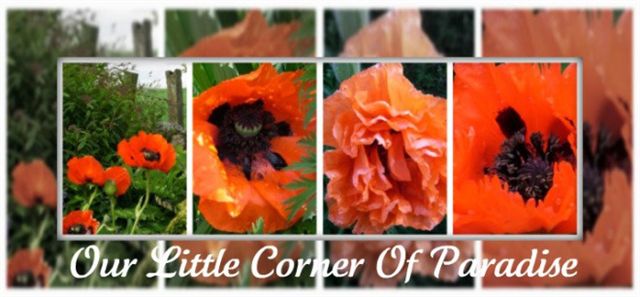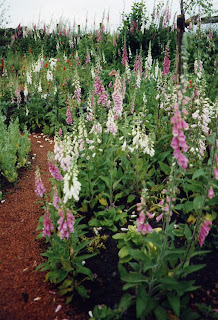Digitalis.

I preferred the train journeys, looking out at the ever-changing panorama of wild flowers - the most striking of which was the foxglove - growing along the embankments, whereas our car seemed to crawl along at a snail’s pace, often with only large tracts of moorland for miles on end, and little of interest to break the boredom of the journey, barring the beauty of those striking flowers.
The tall, elegant spires – in shades of white, pink and deep purple - grew in profusion along bankings, in deciduous woodland areas and under tall fir trees. Their fascination stayed with me and I have been growing them for many years now. In one of the early years here, before we had lots of established perennials, our garden was awash with a mixture of single foxgloves and the taller, double-headed hybrids.

























5 comments:
Gorgeous! (and well well worth the palaver of commenting, I think)
I just love foxgloves always happy to see them self seeding in the garden.
Beautiful pictures. I encourage wildlife in my garden, though in the case of flowers, they're mostly self-seeded - I'm a vegetable enthusiast! For taste, not for size.
Thank you for taking time, Diamond Geezer, to look at my blog and pass on a positive comment. I learn so much about London (where I used to live and work) each day from your blog, and I've left a comment on yours about the dearth of sockets.
Thank you for your kind words of encouragement, Ruth. Hope you enjoyed your visitors at the weekend.
I feel guilty about concentrating on flowers. I have to admit my vegetable plot is small. When I started my first garden 40 years ago, my dad used to always remark, "It's bonnie, but you can't eat the flowers!"
What beautiful foxgloves! I have grown them in my garden but they do not seem to do all that well, they hang around for a year or two and then disappear.
Post a Comment